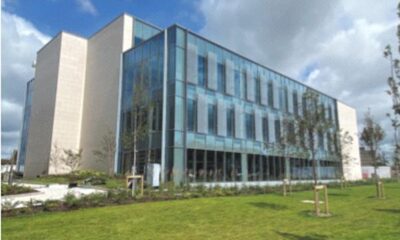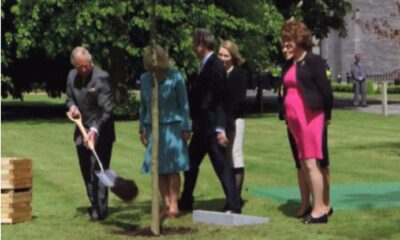CITY TRIBUNE
Property boom in Galway saw €573m in sales last year
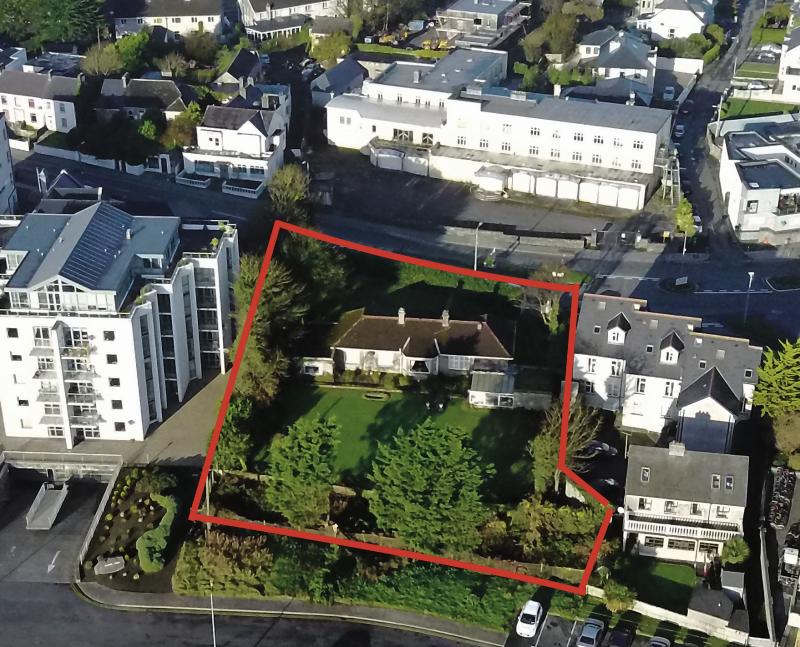
The sales boom is continuing in Galway’s residential property market, with almost €573 million worth of homes sold in 2018.
The combined value of sales last year was up by just over 6% on 2017 and is the highest figure since official records began in 2010.
An analysis of official figures from the State’s Property Price Register by the Galway City Tribune shows that up until December 14 (the most up-to-date figures available), there were a total of 2,363 property transactions in Galway City and county.
For comparison, in 2010 when the Price Register came into effect, there were 896 transactions, with a combined value of €200m – that means that in eight years, the number of transactions has increased by almost 164%, while the value of sales almost trebled (up 185%).
Up until Week 50 of 2018, the total combined value of residential property sales was €573,022,905, up 6.3% from the €538,901,624 recorded in the exact same 50-week period for 2017, when there were 2,604 transactions.
There was a decrease in the volume of sales of just over 9%, the figures show.
A ‘health warning’ comes with the figures in that the Property Price Register is compiled from data which is filed, for Stamp Duty purposes, with the Revenue Commissioners, and there can be delays before a transaction appears on the register.
The biggest property sale of the year was a bungalow on a half-acre site in Salthill (opposite the former Warwick Hotel), which sold for €1.8m in March. The guide price was €1m.
Planning permission has since been sought on that site for the development of 39 apartments in two blocks.
The next major sale was a palatial four-bed detached house (with fully converted attic) at Barna Gardens in Barna, set on one acre of landscaped gardens, which sold for €1.575m.
As well as 4,200 square feet of accommodation, there is an additional 1,300 sq ft in attic space. It boasts high ceilings, travertine tiled floors, and a master bedroom which spans the full depth of the house – and has been likened to that of a five-star hotel, with double jacuzzi bath among the man luxury features.
A city centre townhouse at 17 New Dock Street, which dates back to the 1900s and has development potential due to a 0.05 ‘L’-shaped site, sold in June for €1.5m, having gone to auction with a €700,000 price tag.
At Forramoyle East, Barna, a stylish six-bed house with its own cinema and internal glass hallway overlooking the private decking and garden, went on the market with a €1.6m price tag and sold for €1.375m.
Cluain Mhuire, a period property on Taylor’s Hill in Galway, sold at auction at the end of 2017, but the €1.4m sale was recorded in 2018. Built in 1913 and designed to facilitate Church of Ireland pastoral activities, it went to auction with a guide price of €1.35m.
On Taylor’s Hill, St Helen’s, which sits on a one-acre site and was built in the 1840s by the brother of Lady Gregory, went on the market with a guide price of €1.5m and sold for €1.311m.
Also on Taylor’s Hill, Averarde, a five-bed detached property which extends to 3,000 square feet, sold for €1.25m.
In total, there were 16 sales which exceeded the €1m mark – three of which were multi-unit residential sales.
The multi-unit sales included just under €34.8m for the Cúirt na Coiribe student accommodation complex on the Headford Road in Galway, which was purchased by Exeter Property Group, a US-based property fund.
Seventeen apartments on the upper floors at Citypoint on Prospect Hill – the development which houses TK Maxx – sold for a total of €5.112m.
The cheapest property sale recorded in Galway in 2018 was a derelict bungalow at Gortaha, Portumna on 0.2 of an acre, which sold for €7,000.
The Property Price Register figures show that since 2010, the volume of sales being recorded in Galway – and their total value – decreased, before embarking on a significant upward trend.
In 2010, there were 948 sales registered in Galway up to December 14 – the date used in this analysis for all comparisons – with a total value of almost €211.7m.
The comparative figures the following year were varied; the volume of sales was 853 (up less than 1%), while the value was €186m (down 11.7%).
In 2012, the value of sales was up around 4% to €194.3m and there was a 22.5% increase in the volume of sales from 956 to 1,171.
There was a subsequent massive jump in total values and volumes the following year – up 35% to 1,585 and up 27% to €248m.
Between 2013 and 2014, the volume of sales was up 53% from 1,585 to 2,425, while the total value was up 52% to almost €377.4m.
In 2015, there were 2,828 transactions with a total value of just under €477m, while in 2016, there were 2,604 transactions with a total value of €538.9m.
Looking at sales during the entirety of 2010 to 2017 and up to December 14, 2018, more than €3.34 billion worth of residential property sales have been recorded.

CITY TRIBUNE
Galway ‘masterplan’ needed to tackle housing and transport crises
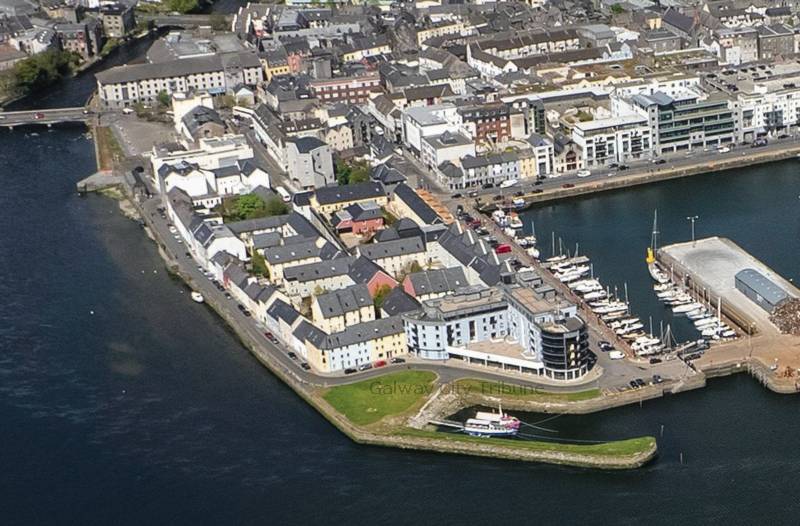
From the Galway City Tribune – An impassioned plea for a ‘masterplan’ that would guide Galway City into the future has been made in the Dáil. Galway West TD Catherine Connolly stated this week that there needed to be an all-inclusive approach with “vision and leadership” in order to build a sustainable city.
Deputy Connolly spoke at length at the crisis surrounding traffic and housing in Galway city and said that not all of the blame could be laid at the door of the local authority.
She said that her preference would be the provision of light rail as the main form of public transport, but that this would have to be driven by the government.
“I sat on the local council for 17 years and despaired at all of the solutions going down one road, metaphorically and literally. In 2005 we put Park & Ride into the development plan, but that has not been rolled out. A 2016 transport strategy was outdated at the time and still has not been updated.
“Due to the housing crisis in the city, a task force was set up in 2019. Not a single report or analysis has been published on the cause of the crisis,” added Deputy Connolly.
She then referred to a report from the Land Development Agency (LDA) that identified lands suitable for the provision of housing. But she said that two-thirds of these had significant problems and a large portion was in Merlin Park University Hospital which, she said, would never have housing built on it.
In response, Minister Simon Harris spoke of the continuing job investment in the city and also in higher education, which is his portfolio.
But turning his attention to traffic congestion, he accepted that there were “real issues” when it came to transport, mobility and accessibility around Galway.
“We share the view that we need a Park & Ride facility and I understand there are also Bus Connects plans.
“I also suggest that the City Council reflect on her comments. I am proud to be in a Government that is providing unparalleled levels of investment to local authorities and unparalleled opportunities for local authorities to draw down,” he said.
Then Minister Harris referred to the controversial Galway City Outer Ring Road which he said was “struck down by An Bord Pleanála”, despite a lot of energy having been put into that project.
However, Deputy Connolly picked up on this and pointed out that An Bord Pleanála did not say ‘No’ to the ring road.
“The High Court said ‘No’ to the ring road because An Bord Pleanála acknowledged it failed utterly to consider climate change and our climate change obligations.
“That tells us something about An Bord Pleanála and the management that submitted such a plan.”
In the end, Minister Harris agreed that there needed to be a masterplan for Galway City.
“I suggest it is for the local authority to come up with a vision and then work with the Government to try to fund and implement that.”
CITY TRIBUNE
Official opening of Galway’s new pedestrian and cycle bridge
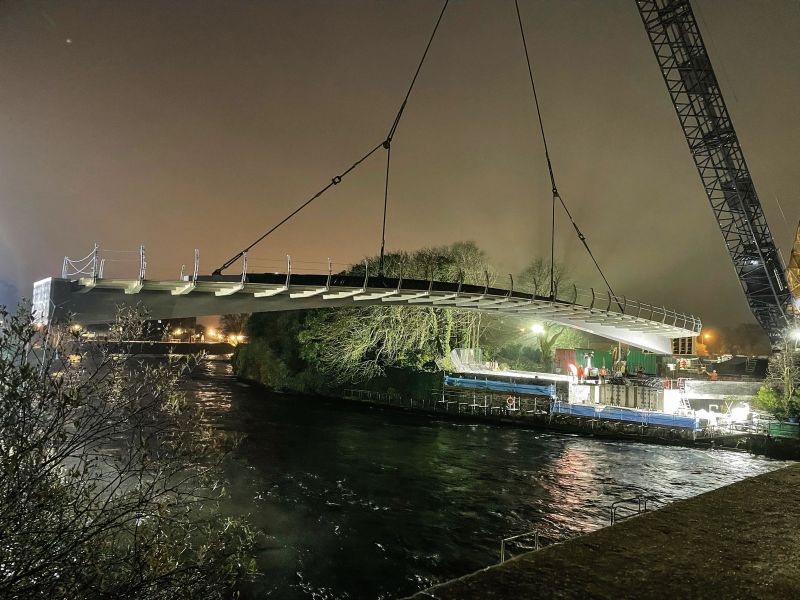
The new Salmon Weir pedestrian and cycle bridge will be officially opened to the public next Friday, May 26.
Work on the €10 million bridge got underway in April 2022, before the main structure was hoisted into place in early December.
A lunchtime tape-cutting ceremony will take place on Friday, as the first pedestrians and cyclists traverse the as-yet-unnamed bridge.
The Chief Executive of Galway City Council, Brendan McGrath, previously said the bridge, once opened, would remove existing conflicts between pedestrians, cyclists and traffic “as well as facilitating the Cross-City Link public transport corridor over the existing 200-year-old bridge”.
The naming of the new bridge has been under discussion by the Council’s Civic Commemorations Committee since late last year.
One name that has been in the mix for some time is that of the first woman in Europe to graduate with an engineering degree – Alice Perry.
Ms Perry, who was from Wellpark, graduated from Queen’s College Galway (now University of Galway) in 1906. The university’s engineering building is named in her honour.
The bridge was built by Jons Civil Engineering firm in County Meath and was assembled off-site before being transported to Galway. Funding for the project was provided in full by the National Transport Authority and the European Regional Development Fund.
(Photo: Sheila Gallagher captured the city’s new pedestrian footbridge being raised on the south side of the Salmon Weir Bridge in December. It will officially open next Friday, May 26).
CITY TRIBUNE
Minister branded ‘a disgrace’ for reversing land rezoning in Galway City

From the Galway City Tribune – Minister of State for Local Government and Planning, Kieran O’Donnell was labelled a “disgrace” for overturning councillors’ decisions to rezone land in the new City Development Plan.
Minister O’Donnell (pictured) confirmed in a letter to Council Chief Executive Brendan McGrath last week that he was reversing 25 material alternations made by councillors to the CDP 2023-29. He made the decision on the advice of Office of Planning Regulator (OPR).
Minister O’Donnell directed that 14 land parcels that were subject to land-use zoning changes by councillors as part of the Material Alterations to the Draft CDP should be reversed.
He directed that a further 11 land parcels in the city should become “unzoned”.
The Minister found that the CDP had not been made in a manner consistent with recommendations of the OPR, which required specific changes to the plan to ensure consistency with the national planning laws and guidelines.
At last week’s Council meeting Cllr Eddie Hoare (FG) asked for clarity on the process by which councillors could rezone the lands that had been changed by the Minister’s direction.
Cllr Declan McDonnell said, “What he [Minister O’Donnell] has done is an absolute disgrace”.
And he asked: “Do we have to have another development plan meeting to deal with it?”
Both Cllrs Hoare and McDonnell wondered what would become of the lands that were rezoned or unzoned by the ministerial direction.
Mr McGrath said the Council had put forward an argument in favour of retaining the material alterations in the plan, but ultimately the Minister sided with OPR.
He said if councillors want to make alterations to the new plan, they could go through the process of making a material alteration but this was lengthy.
The Save Roscam Peninsula campaign welcomed the Minister’s decision.
In a statement to the Galway City Tribune, it said the direction would mean the Roscam village area on the Roscam Peninsula will be unzoned and a number of land parcels would revert back to agriculture/high amenity.
A spokesperson for the campaign said: “the material alterations made by city councillors following lobbying by developers continued the long-standing practice of councillors facilitating a developer-led plan rather than an evidence- and policy-based plan that meets the needs of the city.
“The Minister’s direction is an important step in restoring confidence in the planning system. It is clear from the City Council’s own evidence on future housing projections that there was no requirement to zone these lands for residential purposes in order to meet the needs of the targeted population increase up to 2029,” the spokesperson added.


